We interviewed Professor Wataru Mitsui of Tokyo University of the Arts about "Shakkei -Neighboring Textures" and "Duo’s Journey." Professor Mitsui specializes in the history of Japanese architecture and is well versed in a wide range of fields including research on historical buildings and Japanese gardens, and conservation of cultural properties. He is also Makoto Yamaguchi’s supervisor for his doctoral program.
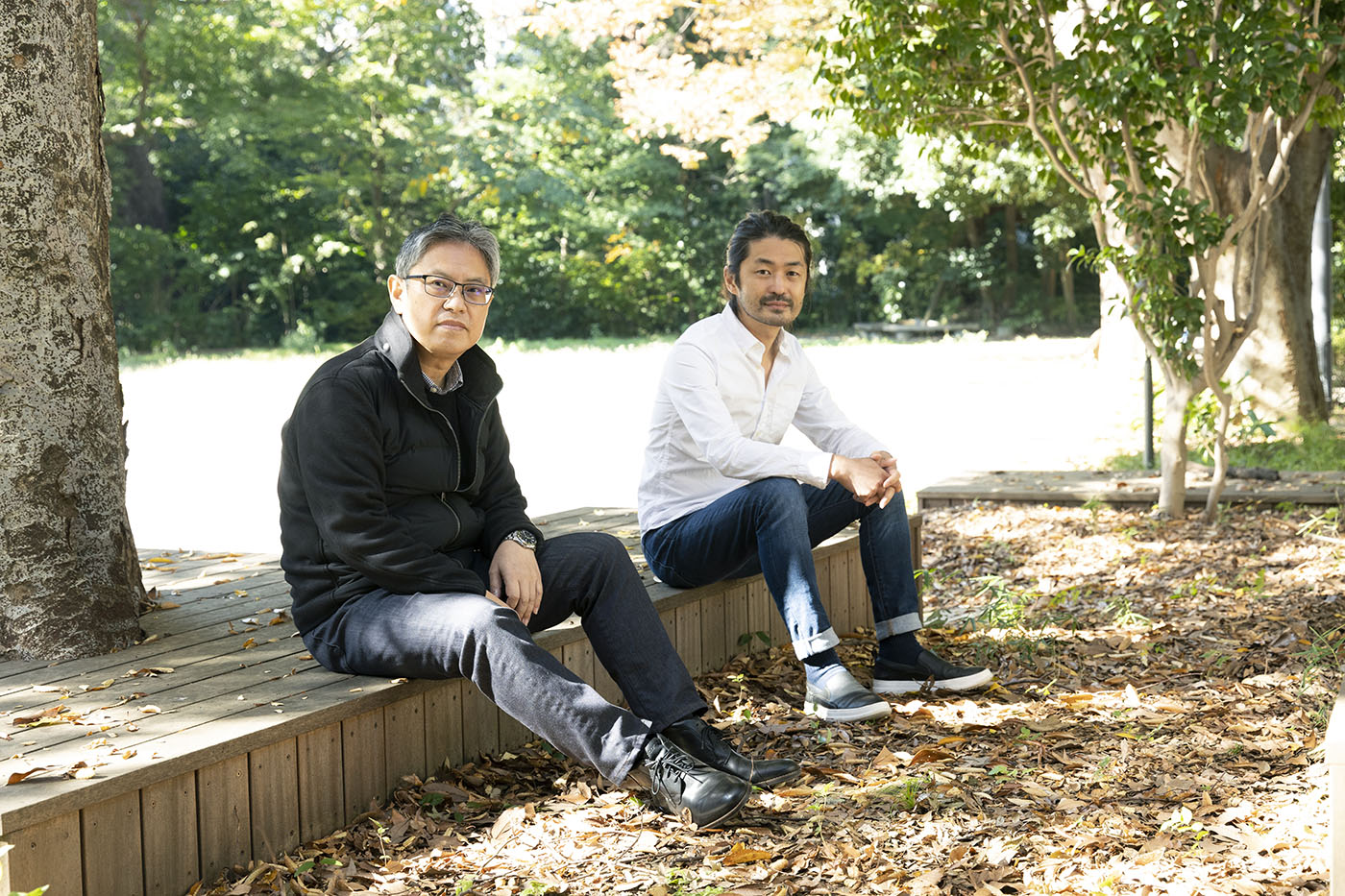
I heard that the "Shakkei—Neighboring Textures" project started from Professor Mitsui’s conversation with Mr. Yamaguchi. What is shakkei, or borrowed scenery, in the first place?
Mitsui:
As Mr. Yamaguchi mentioned in the interview, some gardens were once famous for their shakkei, but
sometimes the shakkei becomes ruined or is obstructed from view. Yet the gardens are still
standing without the shakkei. This means that the shakkei is not an essential element.
The "scenery" in "borrowed scenery" refers to the point of focus in the garden, or an object that should be appreciated. Sometimes the scenery is as obvious as a standing stone. But there are also some cases when someone says, "That thing is interesting," and everyone agrees, the thing becomes scenery. The reverse is also true. The scenery is something that everyone instantly thinks of when memory is shared, and it cannot be said to be absolute. Even in the famous Ritsurin Garden, the scenery was reinterpreted several times—an object that was once considered as the scenery was lost, and a different object was newly given meaning to become scenery.
Moreover, when it comes to borrowed scenery, "borrowed" means it’s a view of something outside the garden. So the premise is that when someone appreciates it, it becomes scenery, but when it’s no longer visible, nothing can be done about it. Therefore, it strongly depends on the situation and perspective of the viewer. Artificial structures, for example, a temple on a mountain, are also commonly used as shakkei. But when these structures deteriorate and disappear, and no one remembers them anymore, they cease to be shakkei, and a mountain behind them can become shakkei instead. Such overwriting of sceneries can happen over time, too.
For the idea of "scenery", does that mean the difference between background scenery and borrowed scenery depends on the idea of the person who recognizes it?
Mitsui:
That’s right. I think it can be said that scenery is instantly identified when it is recognized. The
background scenery is also a type of scenery when it is recognized as such, so a big difference between
borrowed scenery and background scenery may not be big. Beautiful things that are only seen at a certain
time of the day in a certain season, such as a sea of clouds, can also be recognized with a similar idea
of shakkei. When talking like this, it sounds vaguer and vaguer. This vagueness makes me excited
but also discourages me at the same time.
When I was chatting with Mr. Yamaguchi from this perspective, skyscrapers behind the Shiba Imperial Villa and Tokyo Dome stadium behind Koishikawa Korakuen Gardens came up in conversation. Mt. Hiei is famous for being shakkei for Entsu-ji Temple, but its view is so small that you wouldn’t notice unless it was mentioned. In contrast, the view of the Tokyo Dome from Koishikawa Korakuen is just huge. It is way too overwhelming to call it shakkei, but we agreed how attractive it is.
In the conversation between Mr. Yamaguchi and Mr. Kumon, they mentioned the location where the dome suddenly appears in view in the middle of the circular garden path. In my opinion, if something is viewed and recognized in the circuit-style garden, it can become scenery. Since the garden is designated as a National Scenic Beauty Site, modification without permission is prohibited, yet I still think it might be possible to rearrange and change the garden to present the dome more effectively as newly recognized shakkei. Since gardens are alive, these types of changes must have been made in the past.
We never know what the gardens were like when they were made or a few decades ago because gardens are alive, aren’t they?
Mitsui:
I think other types of creations are perhaps controlled by someone, and there is a moment when the
person considers the work to be completed. For example, in photography, there is an endpoint when you
release the shutter or stop printing. For gardens, however, it’s unclear. Even when the main designer of
the garden stops working on it, the garden might mature into the planned form several decades later,
taking into account tree growth. Since trees with different growth rates are planted, the appearance
never stops changing. Any garden transforms remarkably in 20 years, and it would be completely different
after 100 years. Therefore, it is impossible to precisely know how a garden looked at the beginning, or
what a gardener aimed for.
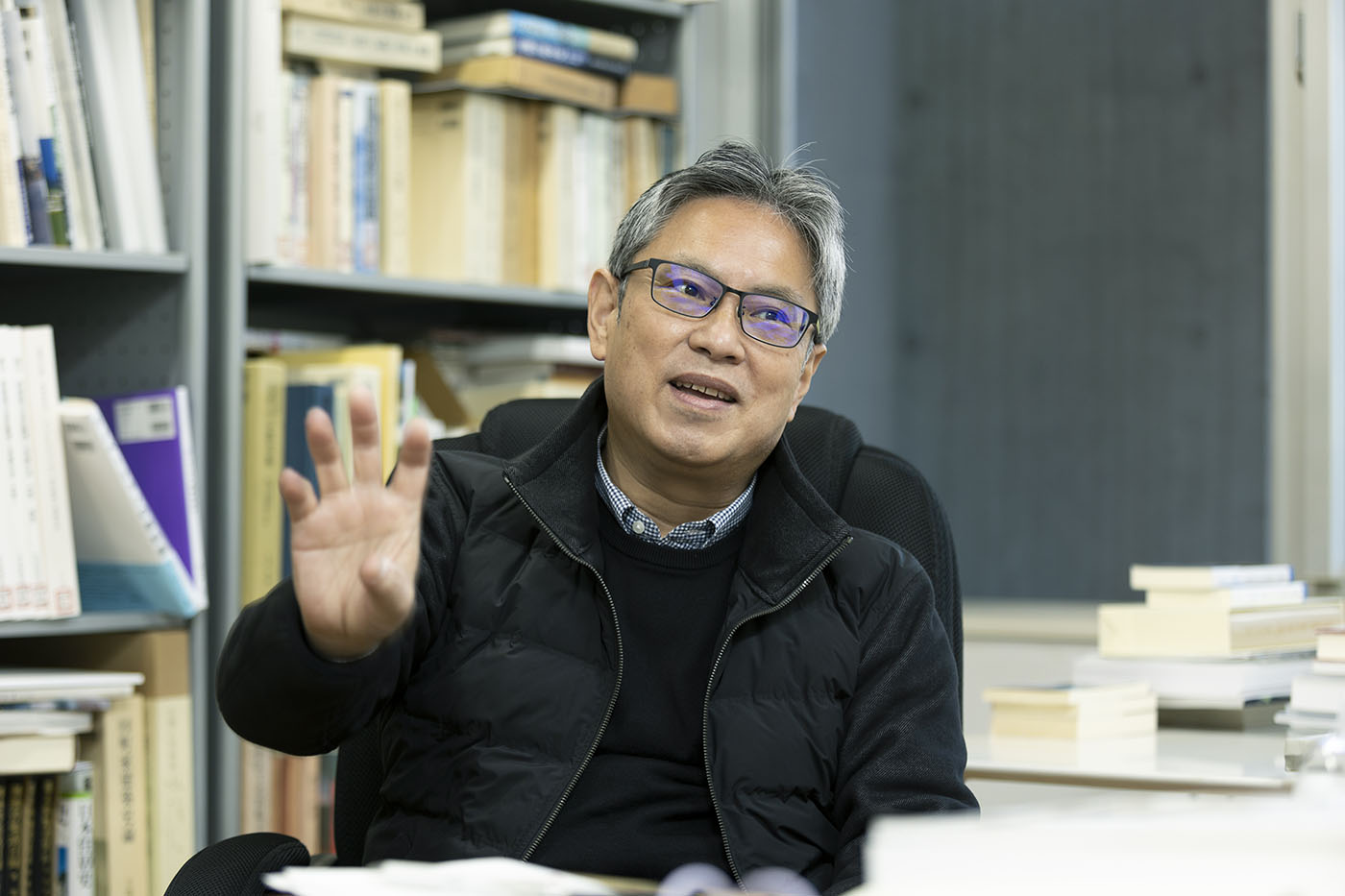
In the conversation, Mr. Kumon was attracted to pine trees. Pines are attractive because they can be
formed to grow their crowns horizontally, but it takes considerable time to achieve the planned form,
and sometimes it doesn’t turn out the way you planned. So, with the premise that perfect control is
impossible, gardeners have taken care of the trees while communicating with them to overcome these
problems. What’s interesting here is that even if you are intending to follow your predecessors’ paths
to maintain a garden, such as pruning and planting, the garden will turn into something completely
different after 50 or 100 years.
In photos of famous gardens from the Meiji era, the overall tree density is not as high as today, giving an empty feel. Many mountains used as shakkei are bald, so the view is likely to have been quite different from today. Interestingly, gardens themselves, buildings for admiring gardens, shakkei, and backgrounds have changed. The buildings for admiring gardens have been modified in response to changing gardens, resulting in further changes to the gardens. The correlation between the two becomes more and more askew over time.
Your specialty is the study and conservation of Japanese architecture and historical buildings. Are gardens an inseparable part of this?
Mitsui:
I haven’t told Mr. Yamaguchi this, but actually, I wasn’t very interested in gardens and tea houses when
I was a student. I rather disliked them. Because I thought both are excessively uncompromising about
materials. When I visited a construction site of a tea house and heard a craftsperson sorting a large
amount of soot-colored bamboo, saying, "Only one out of a hundred is usable," I thought it’s not right.
I thought that the right course of action should be making unusable bamboo usable. Later, I heard a story about Mr. Suzuki, a carpenter of Kan’ei-ji Temple: When a floorboard was accidentally scratched during transportation, he said, "It is what it is," and used the board after sculpting a flower, transforming the scar into one of the petals. This sounded much cooler. I thought this was the way carpenters and architects should be.
I changed my opinion and become interested in gardens after I was involved in the research and repair of Japanese architecture closely associated with gardens. Then I began to think of how to repair buildings that coexist with gardens. The Senso-ji Temple Demboin, which I am still working on today, is a combination of a building nationally designated as an Important Cultural Property and a garden designated as a National Scenic Beauty Site. The garden was repaired based on the results of an excavation, and restored to the condition it would have looked like in the early Showa era.
To be honest, I was surprised at the restored garden with a modified tree form and ground level. The view of the garden from the building changed more than I expected and was remarkably improved. The building will be repaired based on the garden, to restore the condition to around the Taisho era. For the Senso-ji Temple Demboin, we will probably be able to adjust the correlation between the building and the garden, but there are many older works where it is difficult to adjust the correlation.
An interesting thing about gardens is that the definition and history are ambiguous. Have they been studied so far?
Mitsui:
The scenery of a garden is a type of sign. There is a way to understand the overall characteristics by
linguistic interpretation of mutual connections between such signs, but there is also a way to deepen
the meaning of the specific scenery’s sign-in line with its historical nature. Such interpretations
include likening the back of a waterfall to the residence of an immortal hermit, or a pond to an ocean.
There are countless studies or discourses on this subject.
Japanese and Chinese have long been doing this, and Europeans have also shown an interest in allowing room for different interpretations and a certain type of ambiguity after the 20th century. Perhaps they are interested because it’s comprehensible yet on the edge of the scope of understanding. If it were completely beyond understanding, they wouldn’t be interested in it.
Many have studied shakkei, but I believe that most of the research has been on the timing of garden making, the interpretation of scenery, and reinterpretation. It seems there is surprisingly little design research that Mr. Yamaguchi will work on, such as the composition of the shakkei and the garden as a whole, the relationship with the viewpoint, and changes in the view.
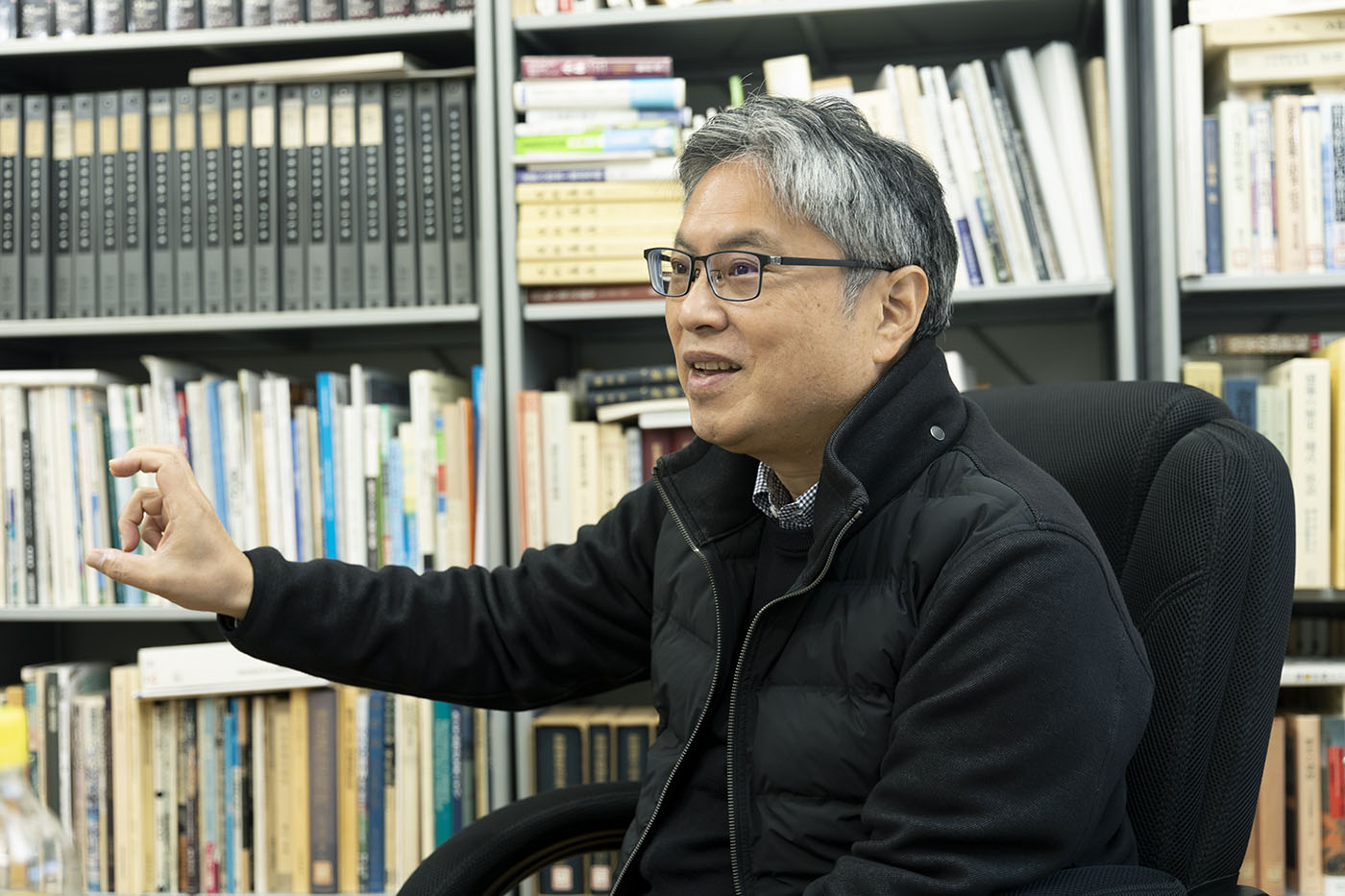
When comparing Japan and other countries, what are the ideas about gardens?
Mitsui:
In Europe and China, the most costly buildings are the residences of powerful figures, and their gardens
have been dynamically developed, although the UK is a little different. Meanwhile, in Japan, powerful
figures’ residences are relatively simple, and gardens seldom require large-scale civil engineering
works. Then what was their focus? I think the answer is the designs and materials/textures of relatively
small-scale parts.
This kind of culture originated in Kyoto, and then was introduced to Edo (now Tokyo) and refined.
Mr. Yamaguchi and Mr. Kumon mentioned Katsura Imperial Villa, where the tea house and rice paddies are next to each other. This idea can be also found in Europe and China. One of the implications is to constantly remind the emperor of the citizens’ lives, whereas the rice paddies of Okayama’s Korakuen Garden and Mito’s Kairakuen Garden were probably made due to the Confucian philosophy of the feudal lords. Another reason is perhaps the obscureness of the boundary between a garden and rice paddies.
Furthermore, there were many gardens aggregating elements that are hardly considered to be garden elements today. Gardens with a botanical garden can be found worldwide. The most remarkable is the Toyama Residence in Edo, built by the Owari clan to entertain the 11th Tokugawa shogun, Ienari. The garden included a hill resembling Mt. Hakone, as well as a town resembling the Tokaido post town, Odawara. It was closer to Disneyland than our idea of a garden. The huge garden of the Toyama Residence served as a fabricated world for the shogun who wasn’t allowed to go visit a real town. I said earlier that Japanese gardens are very detailed, but there are occasionally dynamic ones like this.
Thanks to photographer Kentaro Kumon, who learned a perspective on scenery and shakkei, viewers can have a pseudo experience of the perspective by using photos as a medium. It can be said that the impact experienced on-site is similar to what you feel from the snapshots.
Mitsui:
I think it is exactly the way to capture the scenery. Presenting a location of the scenery itself is a
medium, and specifically capturing a previously vague image makes the scenery apparent, while
simultaneously generating Mr. Kumon’s work.
Seeing Mr. Kumon’s photos and Mr. Yamaguchi’s reaction brought me even more thoughts. In particular, the conversation about the Hama-rikyu Garden photo, which cropped out the tops of skyscrapers in the background and kept the characters on them out of sight, made me think for a while. I’m devoted to orthodox shakkei methodologies, so if I were to appreciate the background skyscrapers, I would have included the sky above the building to liken the entire scene to a mountain. Or conversely, I would intentionally capture commonplace letters to highlight the difference between the background and the garden. In fact, I have taken such pictures. But Mr. Kumon shot something completely different, and Mr. Yamaguchi also headed in that direction.
When just talking about characters, Kyoto’s Gozan Okuribi can be called a kind of shakkei. According to this interpretation, shakkei can also be found in cities and ordinary scenes without the existence of a garden. The use of meaningful characters is probably acceptable when there is a common desire to evoke the same memories in everyone, such as sending the souls of the dead to the next world and driving away from a plague, for example.
The project proceeded from the themes of shakkei to neighboring textures, as Mr. Yamaguchi added new meanings to Mr. Kumon’s photos, stratified, and rediscovered them. Was there anything else that caught your attention?
Mitsui:
Mr. Yamaguchi’s view that Tokyo Skytree is too perfected as an object to be scenery for Hyakkaen Gardens
was interesting. This may be similar to eliminating the characters on the skyscrapers behind Hama-rikyu
Gardens. Another thing is that the scenery of the Skytree seems rather not vague enough. Anyone can
understand the Skytree and Shoden-ji Temple’s Mt. Hiei without explanation, but they are way too
obvious. In my opinion, shakkei is more like something that is more elusive or bewilders people
by displaying multiple interpretations. In the context of texture, the story of the gravel in
Takihara-no-Miya was interesting. This one is more logical and explanatory, though.
I actually found the photo of the construction cones at Hama-rikyu the most interesting, although Mr. Yamaguchi didn’t deem it as appropriate for "Neighboring Textures." In this photo, the construction cones are clearly viewed as scenery, like a standing stone in a garden. Both the construction cones and the bamboo fence form the scenery. There’s also the Dentsu Building as shakkei. The garden itself is an unassertive, pure white flat surface, and the stone walls bordering the garden and outside show an outstanding presence, clearly separating the inside and outside. This photo is ideal for explaining a separated garden with a boundary, as well as about the scenery/borrowed scenery, which I find very interesting. Also, not appreciating construction cones sounds typical of Mr. Yamaguchi.
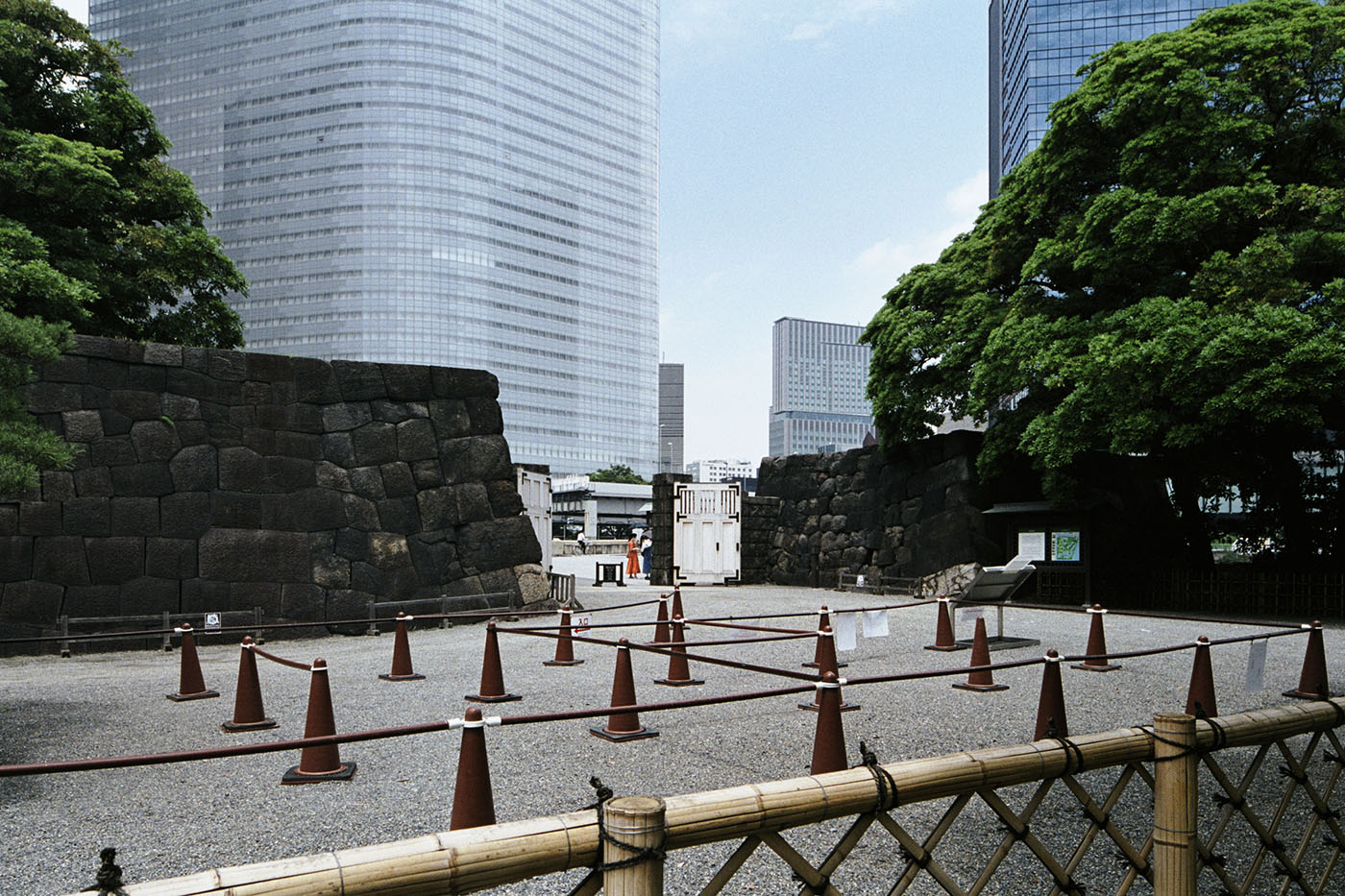
Construction cones as scenery are recognized and it works, but appreciation is a different story. What is the difference between recognition and appreciation of a scene?
Mitsui:
The difference is probably the most important. That’s where the difference between a textbook garden and
an outstanding garden arises. Anyone can lay out a scenery or recognize it as well. But that’s not the
end. In the world of Zen gardens, garden-making is sometimes accompanied by various things, such as
people who recognize it as scenery and write a poem, or a painter drawing a picture. I believe that
definite appreciation grows through repeating small improvements by involving many people.
In addition, I mentioned that scenery is a point to pay attention to, but it simultaneously means a perspective of humans. Let’s take the example of Amanohashidate, one of Japan’s three scenic views. The sandbar itself is a scenery, but at the same time, the scenic viewpoints and the "crotch peek" framing are also part of the scenery. The relationship between an object and a point of view, or the way of looking at the object, has been established through artistic expressions as paintings and poetry.
Sometimes, when a scene such as "three geese are flying" or "the autumn sun is shining" is expressed in a poem or painting, the scenery would include not only the subject but also the time, season, animal, and even the weather. As a result of the accumulated appreciation in many people who view the garden in person, read poems, and admire paintings, a garden will be regarded as outstanding. However, there also are many gardens that would disappear due to a lack of appreciation and agreement.
Reconstructions based on poems and paintings have taken place as well. When Chinese paintings, such as Eight Views of the Xiao and Xiang Rivers (Shosho Hakkei), were introduced to Japan, the Japanese landscape was reevaluated based on the idea, and gardens were created. In the gardens that were allegedly designed this way, sceneries are supposed to have a distinct existence. But in reality, many of them are ambiguous and hard to comprehend since landscapes have changed and rocks are broken. This is probably related to the fact that gardens are alive.
"Duo’s Journey" presents new shakkei today through the medium of photography in the context of "Neighboring Textures." At the same time, Mr. Yamaguchi’s solo project "Island of Shakkei" is underway. What are your expectations for the future?
Mitsui:
What Mr. Yamaguchi is doing in this is, in a sense, a very orthodox approach to Japanese gardens.
Gardens have grown an inseparable relationship with verbal expression and painting. In the modern age,
paintings have become photography, and writing in the form of poetry has become discourses like this
article, so if Mr. Yamaguchi finishes creating a garden as a final touch, they will form a trinity. The
result will be something that has not been requested by anyone—a fruit of Mr. Yamaguchi’s own decisions
based on a variety of criteria. It might also be interesting if Mr. Yamaguchi would reconstruct a garden
based on Mr. Kumon’s photos. I am very much looking forward to seeing many different things.
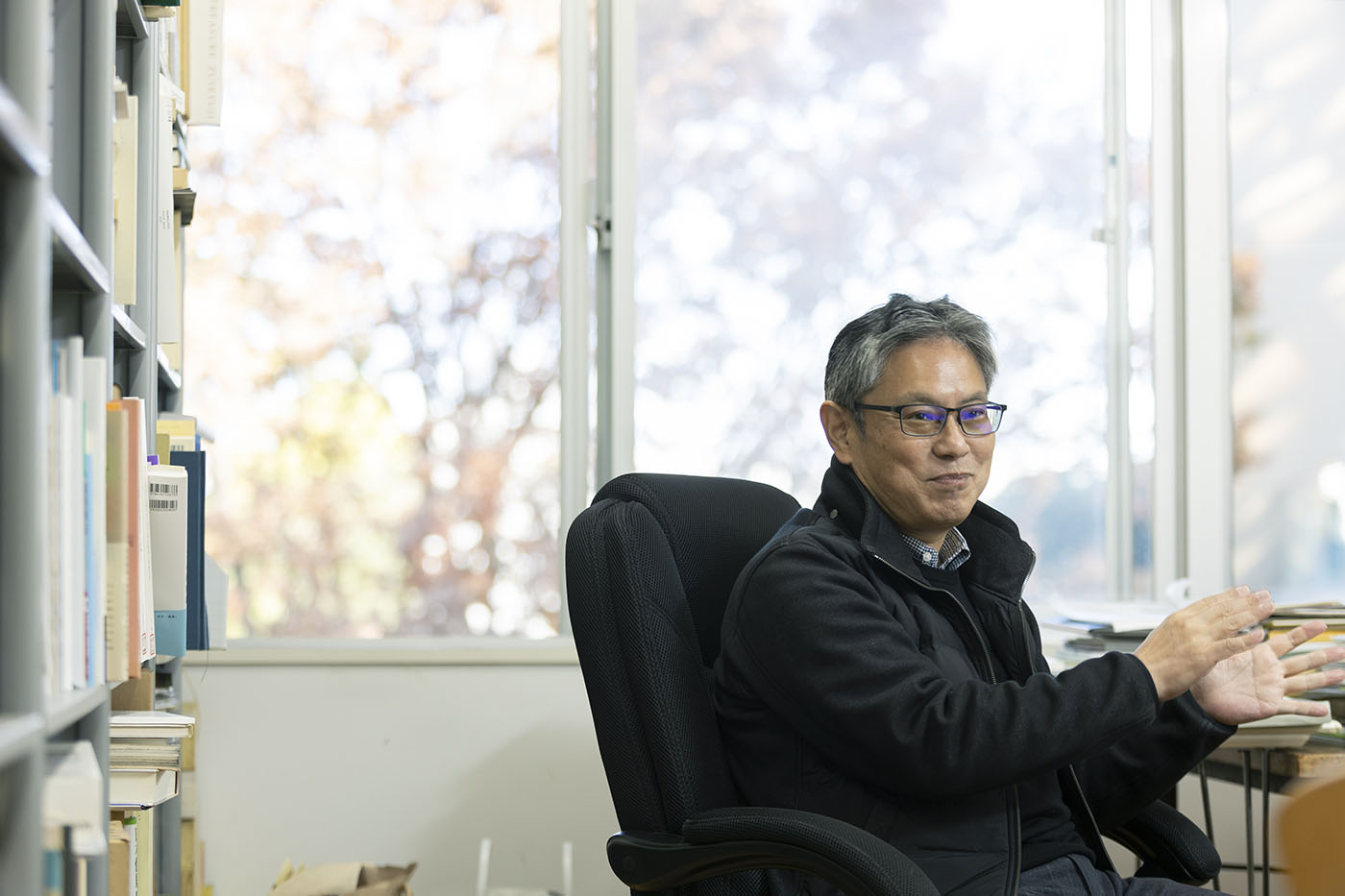
Interview and text by Mai Tsumuraya
